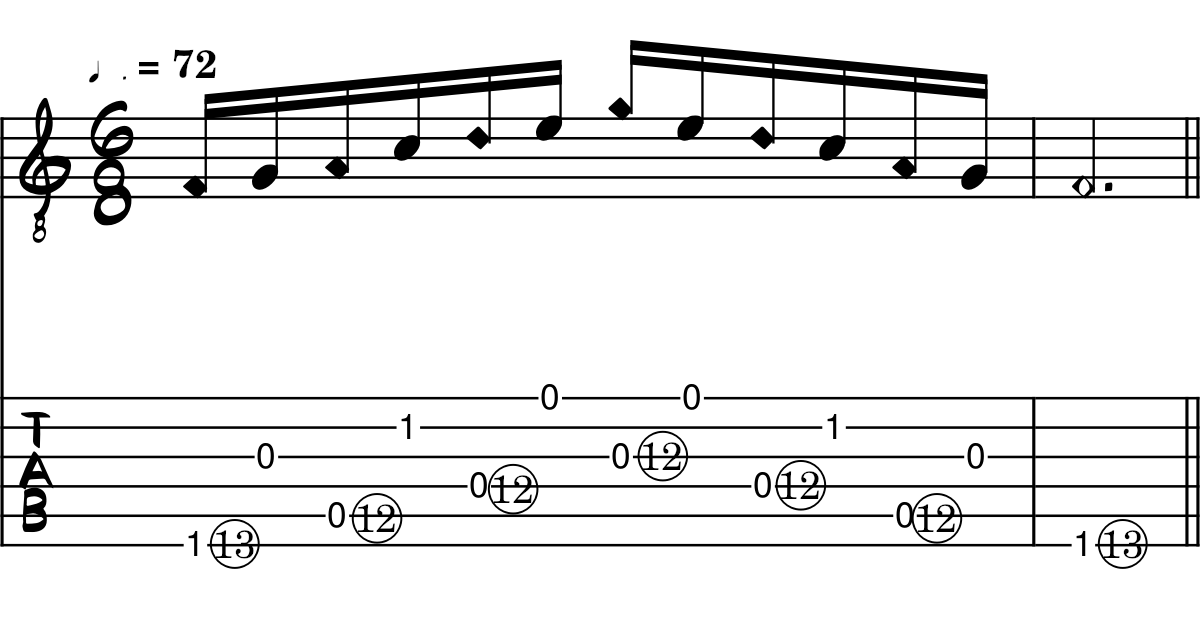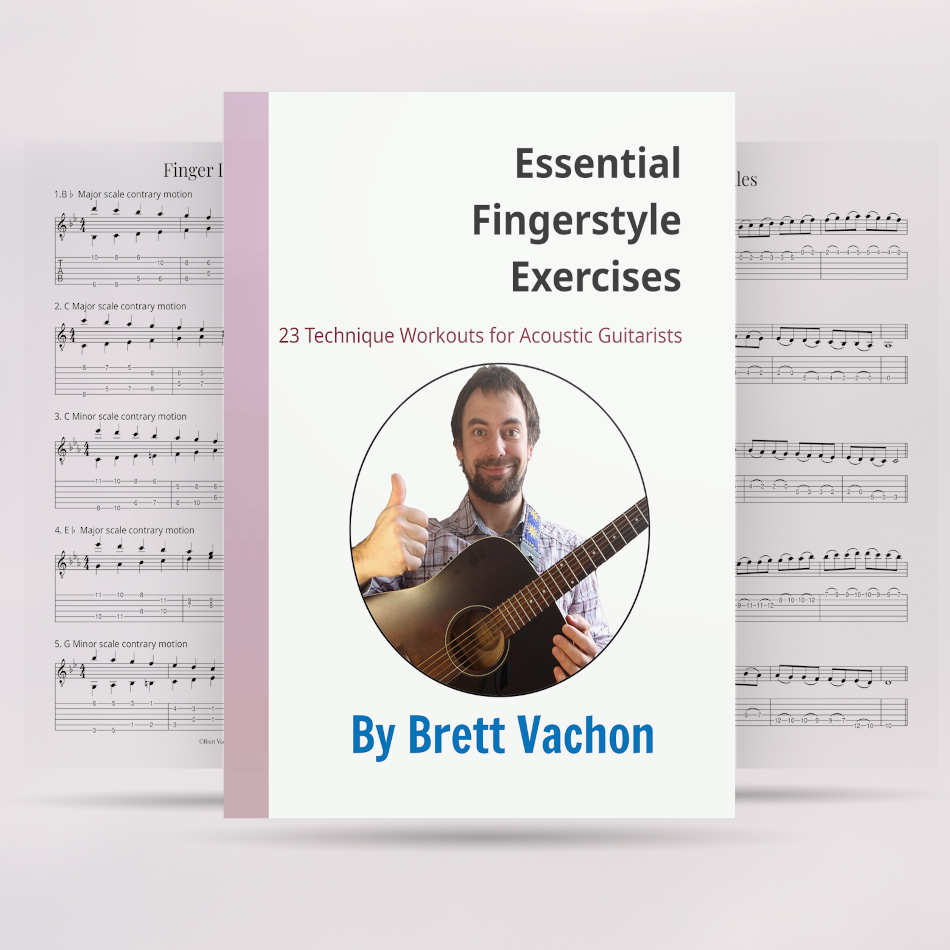If you want to move beyond the basics, here are the advanced techniques you need to know.
Before we dive in to the techniques, let's be clear about one thing: Classical guitarists have been playing what you could call "advanced fingerstyle" for a long time, since at least the early 19th century.
But with acoustic fingerstyle, more advanced techniques emerged in blues music with Blind Blake. Later on, Country and Western music stars such as Merle Travis developed more complex fingerpicking patterns.
And finally, the late Chet Atkins would create whole arrangements that eschew singing altogether, instead focusing all the attention on the brilliance of the arrangement.
Today, we have fingerstyle guitarists who don't sing at all (Eddie Van Der Meer), or who combine both singing and intricate fingerstyle with complex techniques (Jon Gomm).
Let's dive into what the advanced techniques these guitarists are doing, so you can play advanced fingerstyle just like them.
What Are Advanced Fingerstyle Techniques?
Here are the 5 techniques that you will have to learn to play advanced fingerstyle guitar:
- Percussion: This technique involves using your picking hand to strike the guitar body or strings, usually on the second or fourth beats.
- Palm muting: This technique involves using your picking hand to mute the strings near the bridge of the guitar. If you are doing Travis Picking, you will be muting the bass line while letting the melody notes ring out.
- Rasgueado: This is a technique that involves strumming the strings using the fingernails of your picking hand. Some rhythmic patterns, such as Rumba, must be performed in a rapid motion.
- Cascading harmonics: This technique involves lightly touching the strings at certain points along the fretboard called nodes.
- Alternate tunings: This involves tuning the strings to something other than standard tuning (even Drop D counts).
You won't need to learn all of these techniques to play advanced fingerstyle. Some guitarists, such as Sungha Jung, are much more rooted in chord melody playing. Still others, like Tommy Emmanuel, require you to be familiar with thumb picking or hybrid picking if you want to learn all his pieces.
Let's look at each of those techniques in more detail, starting with percussion.
Guitar Percussion
The most basic form of percussion you will encounter is a thumb slap on the second and fourth beats. That's the effect that you'll encounter in the third measure of the song Guren No Yumiya as arranged by Eddie Van Der Meer.
In guitar tablature, the percussion is represented by an x. Unfortunately in advanced fingerstyle guitar, it's not always immediately clear how the percussion should be executed. Sometimes the only way to find out is by listening to a recording.

Advanced fingerstyle guitar usuallty involves playing intricate fingerpicking patterns and melodic lines, while also incorporating percussive techniques, sometimes with both hands.
Palm Muting
This technique is called pizzicato in the world of classical guitar, and it's not unknown to other guitarists, like electric guitarists.
Palm muting involves placing the heel of the hand along the bridge of the guitar to partially muffle the notes. You can hear this technique in action with Sungha Jung's arrangement of the song Perfect by Ed Sheeran.
Unlike with flatpicking, however, where palm muting happens only when playing one note at a time, with advanced fingerstyle guitar you will usually be tasked with plucking melody notes at the same time as you palm mute the bass notes.
Rasgueado
This is a technique borrowed from flamenco guitar where you strike the strings with the fingernail, instead of plucking normally.
There are some specialized songs, like Phunkdified, which require more elaborate rasgueado patterns. But usually you can get away with just the regular rasgueado pattern, which involves a downward flicking motion with the fingers.
Harp Harmonics
Natural guitar harmonics are relatively straightforward to play, but harp harmonics require a lot of precision to get right.
Harp harmonics essentially involve playing harmonic tones with only one hand. You must touch the node on the string with one finger and pluck the same string simultaneously with the same hand.
The tricky part about harp harmonics, beyond the fact that practising them is annoying, is the fact that the node changes location based on where you fret the string.
In this tablature example of cascading harmonics, the fretted note is indicated normally and the fret location of the harmonic node is circled.

Alternate Tunings
Alternate tunings are usually a "set it and forget it" technique, although it's possible to change tunings midway during your song, or even halfway through the beat if your guitar is equipped with banjo tuners.
The trickiest part about alternate tuning isn't so much the mastery of a new technique, but rather that you need to relearn all of your chord shapes. With alternate tunings such as DADGAD, learning the song can take more time due to the unfamiliar layout.
How To Start Learning Advanced Fingerstyle Guitar
To start playing advanced fingerstyle guitar, master the basics and then choose a guitarist whose style you appreciate and who you would like to imitate. Then, listen to and learn as many of her songs as you can to get a good idea of her playing style.
To learn advanced fingerstyle guitar, you will need to start by simple guitar arrangements before progressing to complicated songs.
If you want to play advanced fingerstyle guitar, the best way is with an online guitar course such as Play Fingerstyle Guitar Now!



